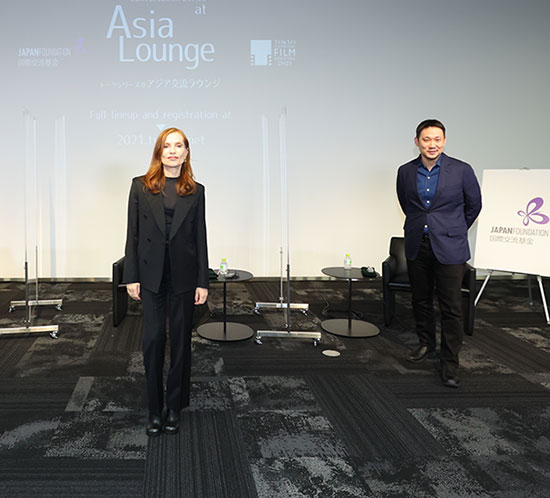If this email does not display correctly, click here
Eligible for the Academy Awards® in all categories including Best International Film, Best Adapted Screenplay, Best Director, and Best Picture.
Ryusuke Hamaguchi, director and co-writer of the universally acclaimed DRIVE MY CAR — which won the Best Screenplay Prize at the 2021 Cannes Film Festival and the Best Film and Best Screenplay Awards at the 2021 Asia Pacific Screen Awards — talks about the challenges of adapting the Murakami short story of the same name, his experience shooting car scenes, and his cast.
Was it a challenge to turn a single story into a fully fleshed out feature film?
In Japanese, the story is only 50 pages long, and it really wasn't enough material to make a feature film. The short story ends abruptly, too, and I felt like I needed to take that story somewhere beyond where it ends on the page. I reread the other stories in Men Without Women, the collection that “Drive My Car” is in, and there were two I felt I could incorporate into the same storyline: “Scheherezade” and “Kino.” In “Scheherezade” there is a woman who tells stories after having sex, and I included that in Kafuku’s wife’s character. “Kino” presented a psychological course for its character, and where he’s meant to end up. This journey in “Kino” inspired Kafuku’s path.
But now that the film is done, I keep wondering, how did I even write this? In my writing process, I think I do share something with the way Murakami works. I let my subconscious do the work. I read and reread the original Murakami story as well as Uncle Vanya, and in each re-reading I would subconsciously collect ideas. Once I started writing, it felt like the necessary story elements would suddenly appear when it was necessary, so the writing process was smoother than expected.
What is it about being in the car that allows your characters to share such intimate details? And how did you try to stage these scenes so they stay visually interesting?
The way the space of a car creates intimate conversations is a mystery, but it has really happened to me in my life. When I was making documentaries with Ko Sakai, after the earthquake and nuclear accident in 2011 (VOICES FROM THE WAVES and THE SOUND OF THE WAVES), we spent a lot of time in the car. I would sit in the front seat, talking to the driver, if only to make sure the driver didn’t fall asleep. I realized, though, that we were often talking about things we wouldn't otherwise have felt comfortable talking about. I felt that the shared landscapes and environment around us were helping move the conversations along, in addition to the car creating a warm, safe, intimate space.
Visually, in a way, the picture itself starts to move because the space is moving. If you’re just watching two people talk in a cafe, it's very different from watching two people talking in a car. No shot in a car is truly static; the landscape moving behind you becomes an integral part of the image. It’s hypnotizing, in a way, and I think it helps the audience keep listening to what people are talking about. That also just happens in real life to people, the car space allows for talking to continue.
How did you settle on the film’s two leads?
Hidetoshi Nishijima (“Yusuke Kafuku”) is an actor I've been watching since my 20s. I’ve seen him in many films, films by Takeshi Kitano and Kiyoshi Kurosawa. I’ve always considered him a wonderful actor, and he’s a huge star in Japan. He's an actor who is always listening and seeing and reacting to what's in front of him.
I never thought I’d get to work with him, but I found out he loved ASAKO I & II, so I took a chance and offered him the role, which he accepted.
Originally, I really had no idea who should play Misaki, until I was casting for WHEEL OF FORTUNE AND FANTASY and I saw a photo of her, and I was interested in meeting her. Generally speaking, my auditions mean I just have a conversation with that person. Usually we talk for an hour. She was so bright, wise beyond her years. She’d been working as an actor since she was a child, and she spent her whole childhood engaging and witnessing an adult world. Even though she had been auditioning for WHEEL OF FORTUNE AND FANTASY, I thought she would be perfect for the role of Misaki.
We encountered an unexpected hurdle when we learned Toko didn’t know how to drive! She didn't have a license. but I believed she would look like she would be able to learn quickly.
Watch a conversation between Award Winning Actress Isabelle Huppert and Ryusuke Hamaguchi at the 2021 Tokyo Film Festival

© 2021 Tokyo International Film Festival
Watch a conversation between Award Winning Director and Screenwriter Bong Joon-Ho and Ryusuke Hamaguchi at the 2021 Busan International Film Festival

© 2021 Busan International Film Festival
This newsletter is brought to you by claudiatomassini + associates and Cineuropa.
To unsubscribe, please click here.
